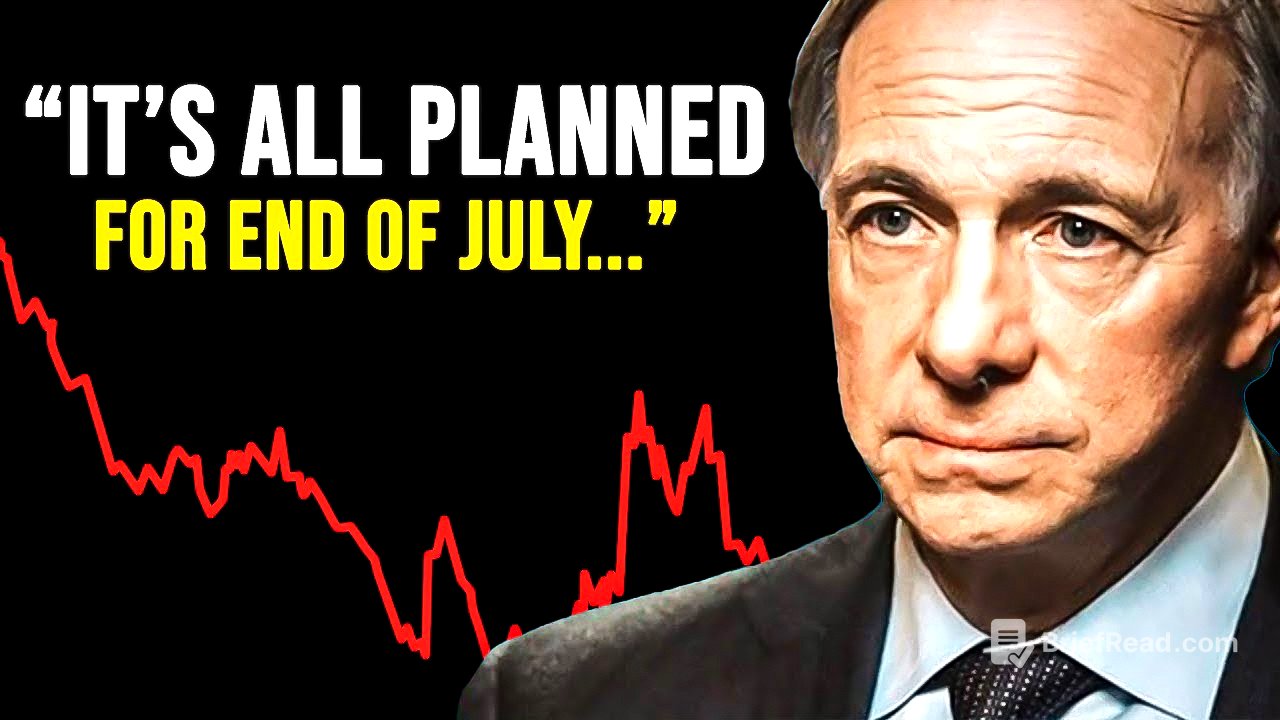TLDR;
Ray Deio warns of a potential economic crisis in the United States if the deficit isn't reduced to 3% of GDP, suggesting a possible devaluation of the dollar similar to Japan's economic struggles. The analysis covers the unsustainability of current spending, the limitations of traditional solutions like cutting spending or raising taxes, and the potential consequences of the US following Japan's path of printing money and artificially lowering interest rates. This could lead to a significant decrease in the dollar's value, impacting savings, income, and purchasing power for Americans.
- US deficit is unsustainable and must be reduced to 3% of GDP.
- Traditional solutions like cutting spending or raising taxes are unlikely in the short term.
- The US may follow Japan's path of devaluing its currency by printing money and lowering interest rates.
- This could lead to a significant decrease in the dollar's value and purchasing power.
- Individuals should invest in the right assets to protect themselves and profit from the crisis.
The Looming Economic Crisis [0:03]
Ray Deio suggests that the United States faces a severe economic crisis if it fails to reduce its deficit to 3% of GDP. The current deficit, around 6.5% of GDP, is unsustainable. The potential crisis could be much worse than a typical recession, with a significant loss of wealth for many Americans.
Unsustainable Government Spending [0:58]
The US government spends $7 trillion while earning $5 trillion, resulting in a $2 trillion deficit. Addressing this requires either cutting spending or raising revenue. Cutting spending is difficult due to debt obligations, social security, and Medicare costs, as well as geopolitical tensions that make defense cuts challenging. Raising revenue through taxes is also unlikely in the near term due to recent tax cuts.
Japan's Economic Path [3:27]
Ray Deio suggests the US might resort to devaluing its currency by printing money and artificially lowering interest rates, similar to Japan's approach. Japan's economy experienced rapid growth but later faced a bubble burst. The Japanese government tried to stimulate growth by lowering interest rates and taxes, but its GDP has been declining since 2010. Despite GDP growth in yen, the average Japanese citizen has become poorer due to rising prices.
Japan's Debt and Monetary Policy [6:29]
Japan's debt-to-GDP ratio grew dramatically until 2010, reaching almost 200%. To manage its debt, Japan lowered interest rates to 0%, which deterred investors. The Bank of Japan intervened by purchasing government bonds, funding these purchases by printing money. By 2025, the Bank of Japan held 50% of all government bonds. The remaining bonds were held by pension funds and banks due to legal requirements, and by businesses needing yen for operations, not for investment purposes.
Devaluation of the Yen and its Consequences [12:53]
The Bank of Japan's policy of printing money led to a significant devaluation of the yen, losing almost 50% of its value against the dollar since 2010. This devaluation caused prices to double, effectively making the average Japanese citizen 50% poorer. Despite the growing GDP in yen, the real GDP has declined, indicating a decrease in overall wealth.
Potential Path for the United States [14:18]
The United States may follow Japan's path due to its growing debt-to-GDP ratio and unwillingness to cut costs or increase taxes. Artificially lowering interest rates to 0% could lead to the Federal Reserve purchasing government bonds, increasing its balance sheet. If the Federal Reserve holds 50% of the treasury bills, the dollar could be devalued by 50%. This means that while nominal incomes and savings may remain the same, their purchasing power would decrease significantly.
Preparing for the Future [16:04]
Ray Deio believes the United States is already on this path, with the White House pushing the Federal Reserve to lower interest rates despite high inflation. Individuals on fixed incomes or with savings should prepare for a significant loss in the value of their money. The cost of goods and assets will increase, while incomes may not keep pace. The key to protecting oneself is to invest in the right assets.









